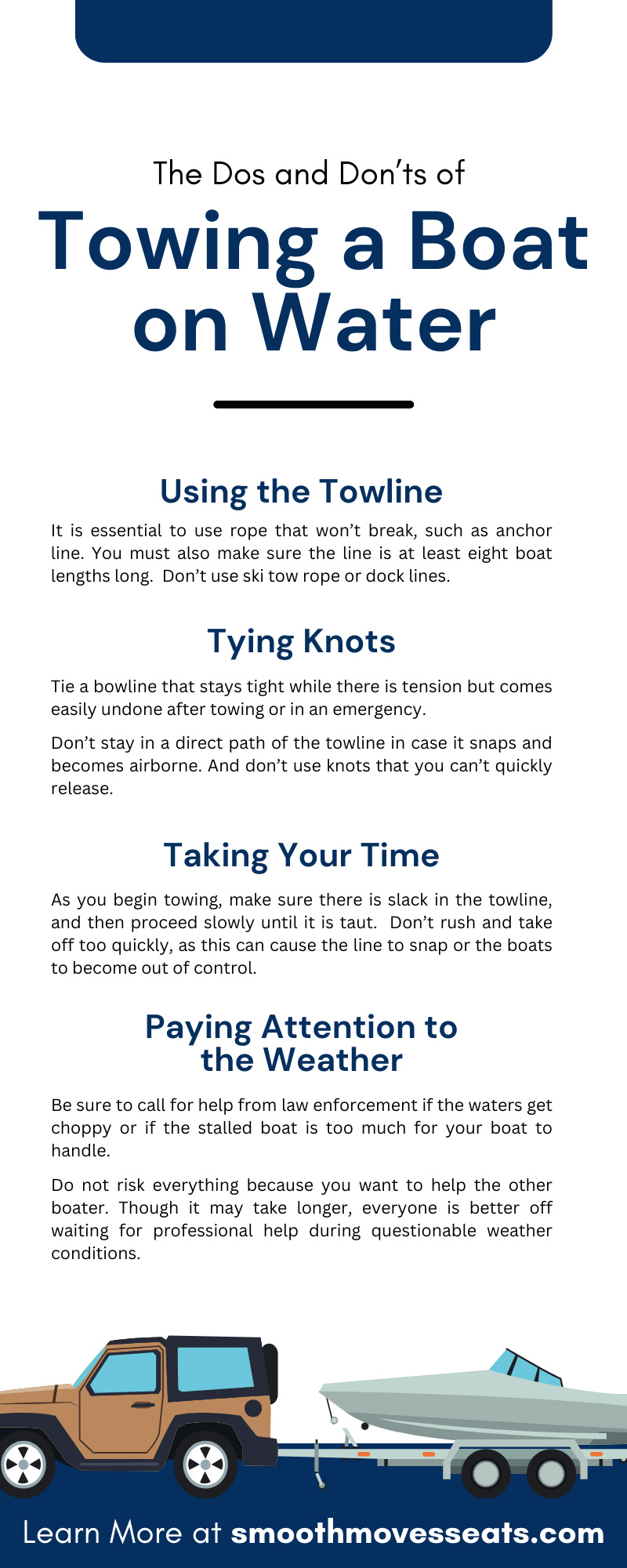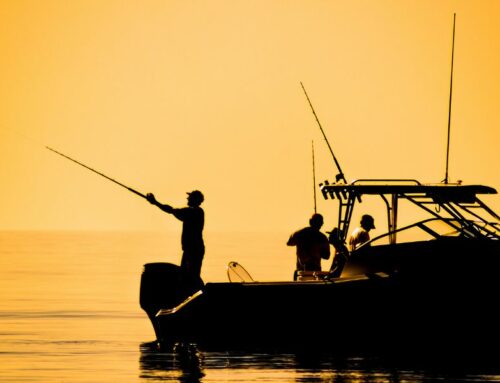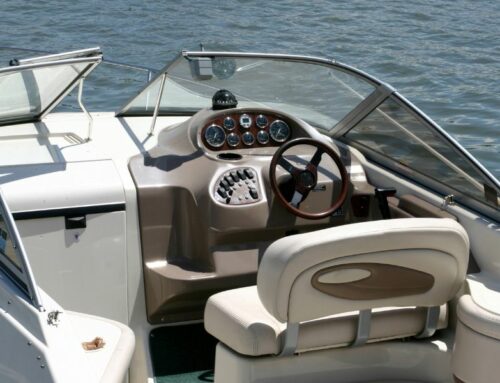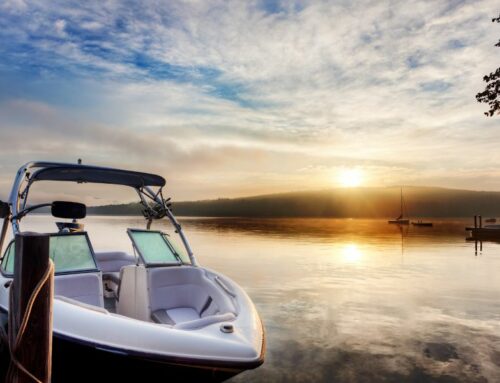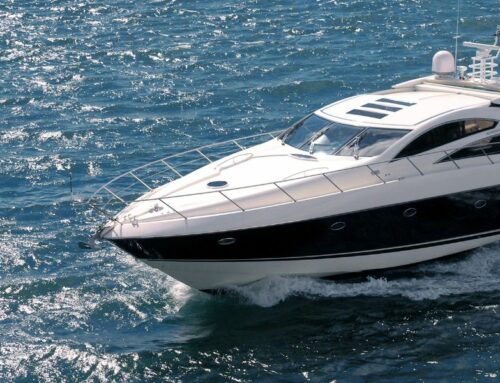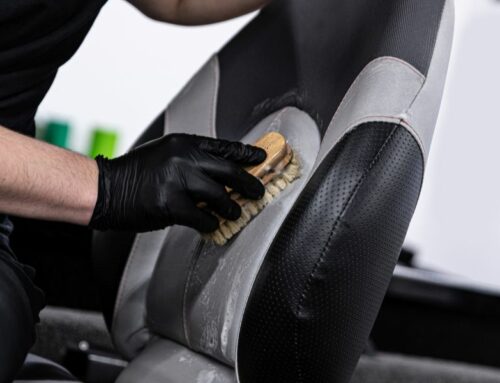As a boater, it’s essential for you to always prepare for the unexpected. Most people who need a tow don’t head out for the day planning for it to happen. When a boat stalls or has a problem that won’t allow it to continue moving, it can become very dangerous as the sun goes down and the waters change. If this happens to you or someone calls you to help another boater, take note of the dos and don’ts of towing a boat on water so that you can help others safely. Read on to explore why boats sometimes need towing on water and how to tow properly.
Breakdowns Happen
Even the most experienced boater can have a bad day with a boat that breaks down. This occurrence may even be more likely to happen to someone with experience because their confidence might cause them to forget to check everything before heading out. Whether you are new to boating or an expert sailor, never leave the dock if your boat is sounding or acting strange. After all, it’s better to lose a day to repairs than get stuck far out on the water. Consider these common reasons boats break down on the water.
Mechanical Breakdowns
It takes a lot to keep a boat running well. There are many moving parts that need regular checks and routine maintenance to keep things working smoothly. It only takes one malfunction to cause a problem that could leave you stranded on the water.
Battery Dies
Take the expiration date on your boat battery seriously. If it’s getting near to that date or the battery is sounding weak, replace the battery to be safe.
Running Out of Gas
If you run out of gas in your car, you can start walking to the nearest gas station. In a boat, no gas can equal danger as your boat will begin to float wherever the water takes it, and you may not be able to stop its trajectory.
No Plan for the Day
Boating is a carefree and relaxing pastime. Still, one reason boaters sometimes need a tow is because they go out without a plan or expectation of where they should go. It’s easy to become disoriented and lost on the water, and before you know it, the boat could run out of gas, stall, and need a tow.
Overheating
When the engine overheats, the boat will stall. The engine may overheat due to clogged intakes, a corroded exhaust, water pump failure, slipping belts, or old hoses. If you maintain these things, your engine is less likely to overheat.
Safely Towing
If you see that someone’s boat has broken down, a tow may be the best way to bring them to safety. Keep in mind that towing a boat properly is crucial not only for the boat that needs help but also for the boat doing the towing. Here are some dos and don’ts of towing a boat on water.
Using the Towline
The towline connects one boat to another for towing. If you use the wrong kind of line, it becomes a dangerous situation for everyone if the line snaps. Therefore, it is essential to use rope that won’t break, such as anchor line. You must also make sure the line is at least eight boat lengths long.
Don’t use ski tow rope. It may seem like a great idea because it stretches, but it can actually put everyone in danger as it stretches and possibly snaps. Also, don’t use dock lines, as they aren’t strong enough.
Securing the Pulling Points
You’ll need pulling points where you attach the lines. Ideally, you should use anchor line to make the bridle, which will attach between the stem cleats on the towing boat. Make this line twice as long as the beam. Don’t attach the line to only one cleat since it will affect the steering, and the cleat can break off from the pressure.
Tying Knots
Tying knots is necessary to attach the towlines properly. To ensure the knots work well, tie a bowline that stays tight while there is tension but comes easily undone after towing or in an emergency. Also, use a cleat hitch knot, which you can create by wrapping the line around the cleat in a figure eight.
Don’t stay in a direct path of the towline in case it snaps and becomes airborne. And don’t use knots that you can’t quickly release.
Taking Your Time
Everyone may feel anxious to get to shore and start repairing the stalled boat; however, it’s important to take your time. As you begin towing, make sure there is slack in the towline, and then proceed slowly until it is taut. Observe everything around the boats and deal with small issues before they become significant problems. Don’t rush and take off too quickly, as this can cause the line to snap or the boats to become out of control.
Communicating Regularly
Both boats have jobs to do and things to look out for as the towing occurs. Make sure everyone keeps their mobile phones and radios on and the volume up for communicating. Be sure to communicate anything that seems off or is making you uncomfortable. It is essential that you do not hitch up the boats and take off with no plan for communication.
Paying Attention to the Weather
The weather forecast when on the water is of extreme importance. A stranded boat may be out longer than the operator was planning, and the skies can take a turn during that time. Be sure to call for help from law enforcement if the waters get choppy or if the stalled boat is too much for your boat to handle. Law enforcement on the water might be the Coast Guard, municipal law enforcement departments, or the State Marine Police.
Do not risk everything because you want to help the other boater. Though it may take longer, everyone is better off waiting for professional help during questionable weather conditions.
There is a lot to remember when it comes to boat safety, especially the safety of towing. However, if you keep these dos and don’ts in mind, everyone will safely arrive at shore, and the stranded passengers will be thankful.
At Smooth Moves, we believe strongly in boat safety and also in boat comfort. Our unique hydraulic boat seat pedestal provides a comfortable ride with incredible suspension, no matter what the water is like on your day out. Check out our boat suspension seats and accessories, and feel free to contact us with any questions.



